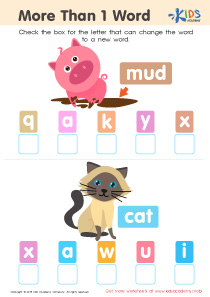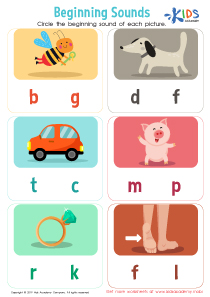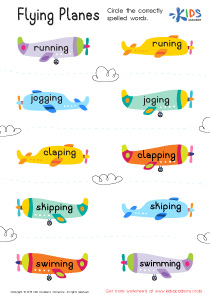Long vowel recognition Vowels and Consonants Worksheets for Ages 6-9
3 filtered results
-
From - To
Boost your child’s reading skills with our Long Vowel Recognition Vowels and Consonants Worksheets for ages 6-9. Through engaging and educational activities, these worksheets help children effectively identify long vowels within words, enhance their phonetic understanding, and strengthen their overall reading abilities. Designed by experts and perfect for young learners, these resources combine fun with fundamental learning concepts. Whether for classroom use or additional practice at home, our worksheets provide the essential tools needed for mastering vowel sounds, ensuring a strong foundation in literacy. Make learning enjoyable and effective with Kids Academy today!
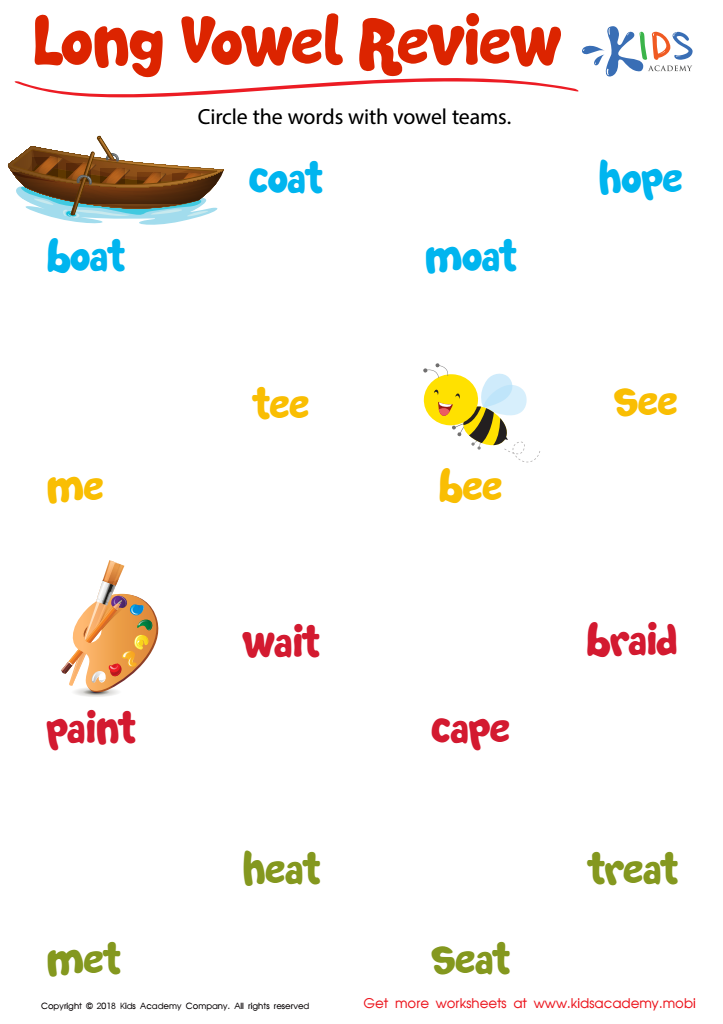

Long Vowel Review Worksheet
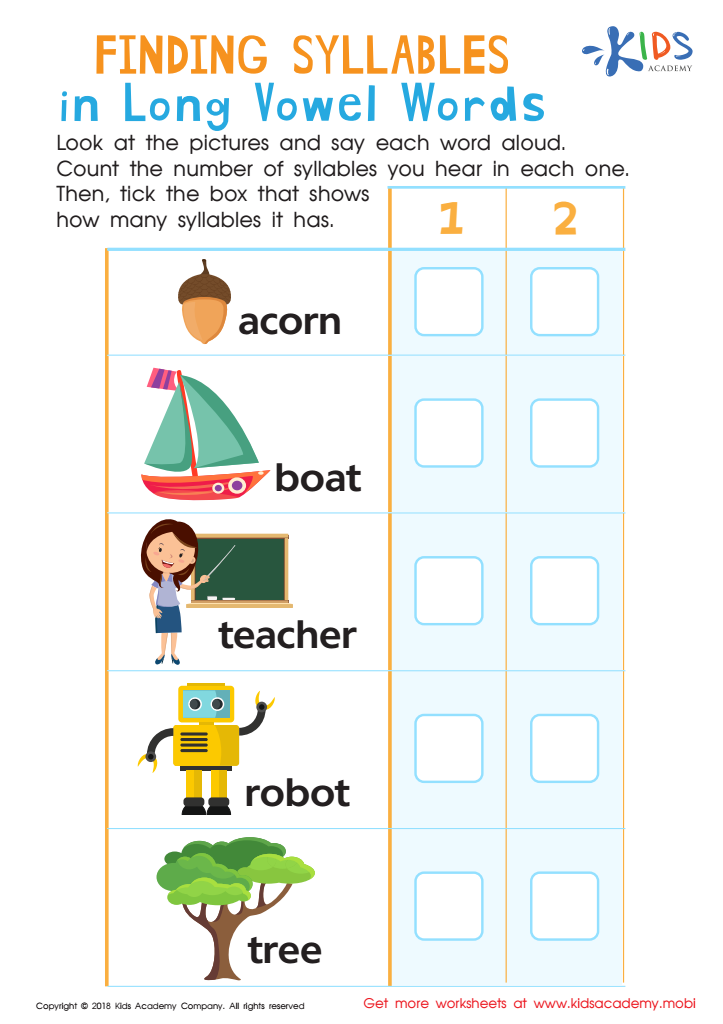

Finding Syllables in Long Vowel Words Worksheet
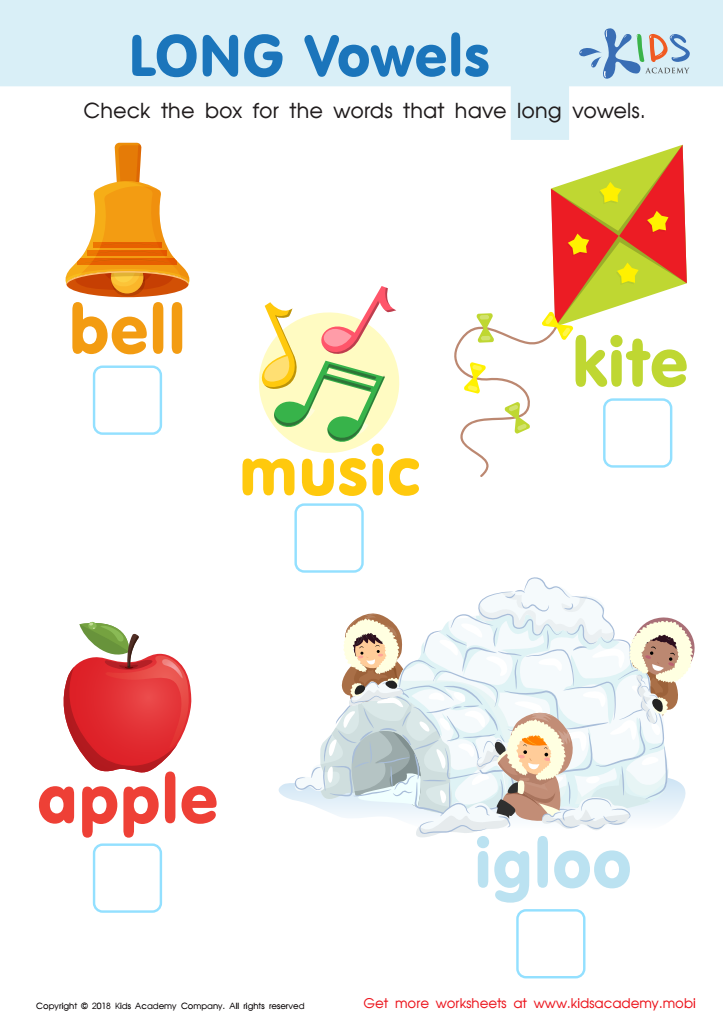

long vowels Worksheet
Long vowel recognition and understanding vowels and consonants are foundational skills that significantly influence a child's literacy development between the ages of 6 and 9. At this young age, children are at a critical period where they transition from learning to read to reading to learn.
First, recognizing long vowels helps improve children’s phonemic awareness. Long vowels, which sound the same as the name of the letter (like the “e” in “see”), can be tricky. Distinguishing them from short vowels reinforces how sounds can change word meanings completely, making this recognition vital for both decoding and encoding skills.
Understanding the varying sounds made by vowels and consonants also enhances spelling and reading fluency. When children can correctly identify these sounds, they can more accurately decode unfamiliar words and comprehend text more effectively. This boosts confidence and enables independent reading.
Proficiency in vowels and consonants lays the groundwork for more advanced literacy skills, such as comprehension, which is crucial for academic success across subjects. Neglecting this aspect can lead to reading difficulties, affecting a child’s overall academic trajectory. Early intervention ensures children develop a robust reading foundation, cultivating a lifelong enjoyment of and proficiency in reading. Therefore, both parents and teachers play key roles in supporting this essential early learning milestone.

 Assign to My Students
Assign to My Students



